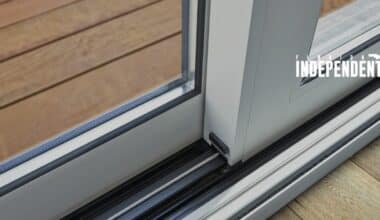Your HVAC maintenance technician will begin their visit by inspecting electrical connections for looseness. They’ll also clean burners, inspect reversing valves, test for carbon monoxide leaks, replace air filters, replace fan motors, lubricate condenser coils, and so much more.
Table Of Contents
Resolving HVAC Challenges
Air Filters
Air filters are essential components in an HVAC system that serve to safeguard it against contaminants and ensure only pure air passes through the unit. They act as the first line of defense and must be changed regularly; when they become clogged up they can overload systems, leading to breakdowns and increasing energy bills; additionally, dirty filters allow airborne contaminants into the home, increasing allergies and asthma symptoms in residents living there.
Most people don’t realize there are different kinds of air filters on the market and each offers specific characteristics and benefits. Some types include disposable cardboard frames with paper screens; others can be reused with metal frames that can be cleaned according to manufacturer instructions.
Most experts suggest changing your filter every 90 days (www.thisoldhouse.com/heating-cooling/how-often-to-change-air-filter) if living full-time in your home and approximately every three months for part-timers; more frequent replacement may be necessary in cases of pets, asthma or other respiratory issues.
Filters with higher MERV ratings capture smaller particles of dust and dirt more effectively but may clog faster. However, they often save money by operating more efficiently.
Belts
Though direct drive motors have become more prevalent in larger HVAC systems, many smaller ones still rely on belts to power compressors and fans. A belt that fails can bring down an entire system; so having quality replacement belts available at all times are crucial for safety. A technician can easily inspect each belt during routine maintenance checks as well as install an emergency belt in case it suddenly breaks.
Most homeowner warranties cover major components but do not extend to smaller elements like fan belts and wiring. An extended warranty from the contractor that installed your system can ensure all minor problems can be addressed without cost to you.
Damaged belts can stretch and develop cracks over time, which is a telltale sign they’re losing their grip and breaking more quickly than when new. Furthermore, this can lead to overheating as well as creating an inefficient surface which reduces efficiency further.
In more extreme situations, the belt may simply snap. The visual inspection will reveal any broken parts and allow a quick replacement process if required – otherwise costly repairs could occur later. In rarer cases, an AC fan belt malfunction could even lead to the windshield defroster not functioning.
Lubrication
Lubricate all moving parts in an HVAC system regularly to reduce friction, damage to parts and ensure efficiency in operation. Lubricating prevents wear and tear on parts while helping your system run more smoothly.
An HVAC technician will lubricate all moving parts in your system to keep it operating smoothly and prolong its lifespan, including the blower motor, fan belts, and condenser coils. Lubricating these components properly can save money on energy bills as well as prevent costly repairs later.
According to this site, your AC uses more electricity when working hard to cool your home, increasing your electricity bill and driving up the cost of cooling it. A clogged air filter restricts airflow, forcing the unit to work harder to distribute cool air – leading to increased energy use and cost. Changing filters regularly and cleaning coils regularly as well as keeping fan blades free from mold or debris build-up can significantly decrease usage costs and save on energy usage costs.
If you own a carbon monoxide detector, changing its battery and cleaning its drain line with a bleach solution can significantly lower energy consumption. A maintenance agreement from a reliable company will make this easy – many provide annual or biannual service as well as priority scheduling and discounts on repair costs.
As with most maintenance checks, starting an HVAC maintenance check requires first using your eyes. A quick glance at both indoor and outdoor units should reveal obvious issues like rust on exterior units, water leakage issues, discolored areas surrounding units, or mold/fungus accumulation on fans – these should all be easy fixes but for more complex issues professional assistance may be required.
Thermostat
The thermostat is an integral component of home heating systems that enables you to select an exact temperature at which to heat your house, as well as control when and if your HVAC systems turn on/off or switch between heating/cooling modes. Unfortunately, any slight error in operation could render your entire system dysfunctional; fortunately, you can often detect these problems by looking out for signs that it may be time for repair/replacement of the thermostat.
As installing a thermostat can be hazardous work, hiring an experienced professional to complete it for you is advised as doing it on your own can cause serious injuries. Some HVAC Chesapeake VA specialists are very affordable. Contacting them beforehand is highly advised so they can make sure it is done right as improper installation could cause more harm to the system and you. A trained and licensed technician should be able to complete this task swiftly and efficiently.
Observing a thermostat that frequently toggles back and forth is an indicator of a malfunctioning unit that cannot maintain its settings, leading to overuse of HVAC and increased energy bills. Consult an engineer immediately in order to see whether replacement or repair is necessary for the unit in question.
Another telltale sign of thermostat malfunction is when it reads room temperatures inaccurately. If it indicates colder than actual room temperatures, this could be caused by a dirty or dusty thermostat cover that needs cleaning. You should turn off your breaker and take steps to access and remove this cover to clean it thoroughly with canned compressed air or a soft brush to restore normal operation of your thermostat.
A thermostat typically lasts around 10 years and you should consider replacing yours when it is nearing this age. Doing so could help save money on energy costs as newer models are designed to operate more efficiently and reduce usage.





